| St
Margaret of Antioch Wellington Herefordshire |
The Parish church of St Margaret of Antioch in Wellington dates back to the 12th Century with alterations
made in the the 14th & 15th Centuries. Major Victorian restorations were carried out in 1883 and 1887.
The Church was given a Grade 1 Listed building status in 1985.
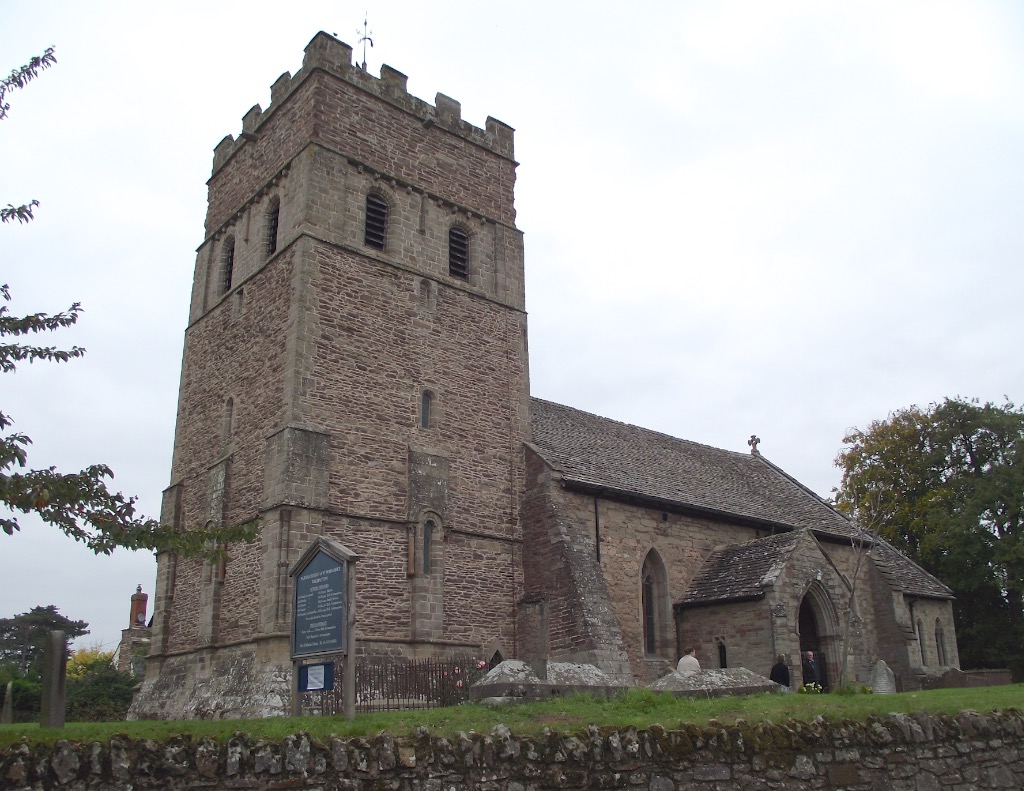
|
The Heritage Group were asked to comment
upon the unusual type of underfloor heating system in
the St Margaret's church. Upon visiting the
church the Group was surprised to discover a similar
type of underfloor heating system to that found in the
St Michael's Church at Ufton Warks. St Margaret's
heating system was most likely installed during the
church's first Victorian restoration in 1883.
Built into the floor of the various aisles
in the Nave are five cast iron floor plates each
approx 400mm square with a centre lift out
section. Each floor plate covers a deep pit, with brickwork forming the sides of each pit
that is scorched and burnt.
The purpose for these various floor pits was for use as fire pits. The scorching of the brickwork inside the pit is a positive indication of the high temperatures reached and emitted by the fire, and there is also a small amount of ash residue left in the base by the fire. The use of these floor pits as fire pits was confirmed by an elderly member of St Margaret's congregation who remembers as a youth the fires being lit in the Autumn, then the cast iron covers being replaced and becoming very hot. Never to be stood upon. She also recalls delivery by horse and cart of coke from Hereford, most likely left as the residue from the manufacture of towns gas at the local gas works. Her recollection was that the fire pits were in use each year up to the winter of 1940/41 when fuel rationing was introduced which possibly prevented further supplies of coke being available. |
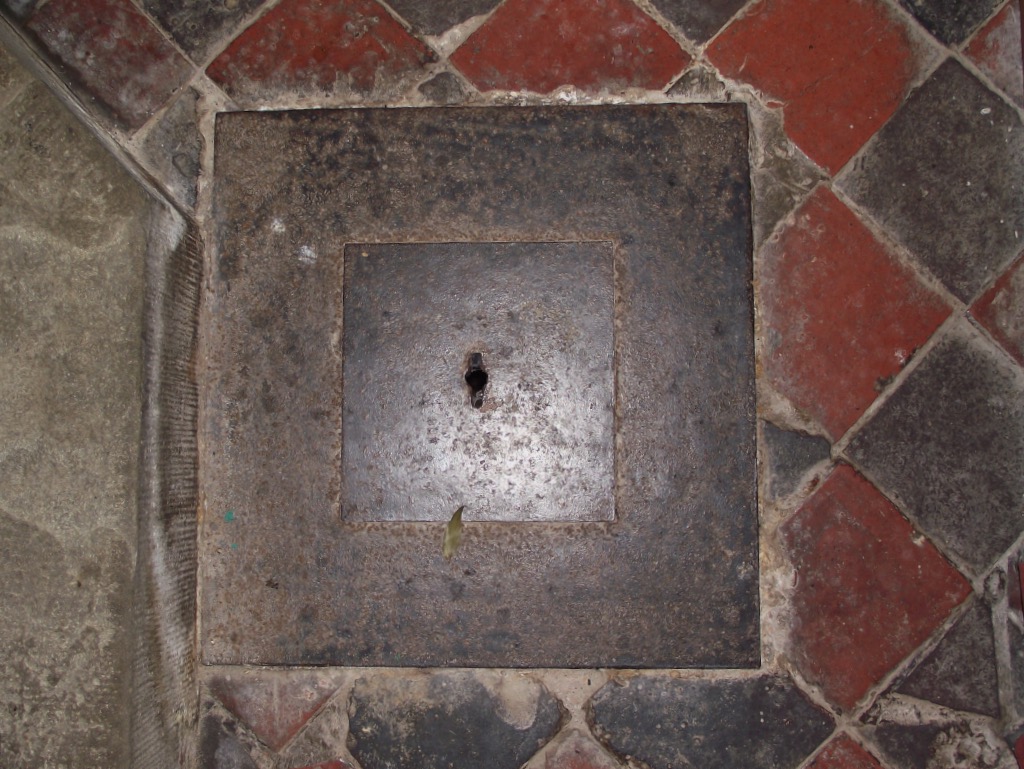 Cast iron floorplate with removable centre section |
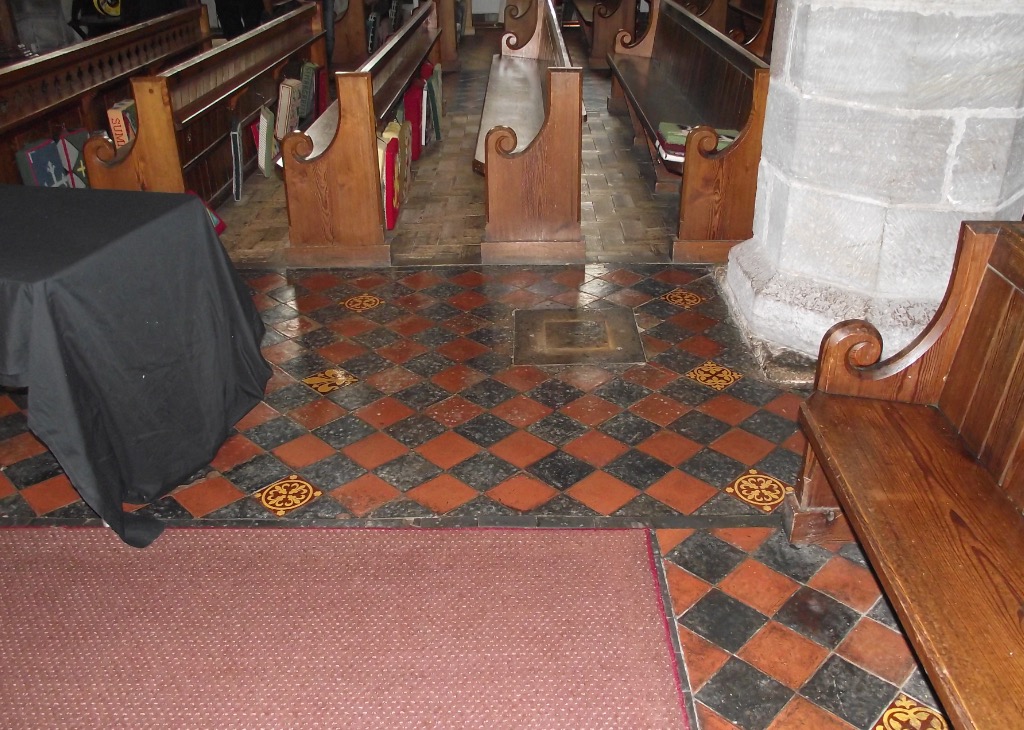 View showing floorplate set into the floor tiles in side aisle |
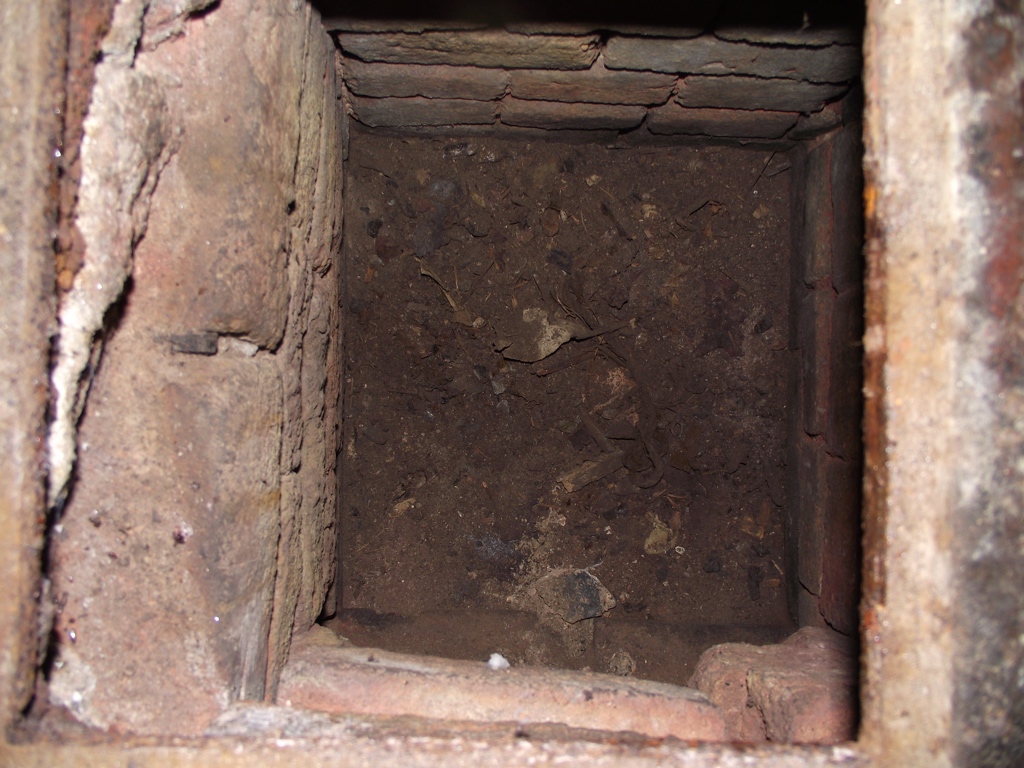 View looking down into a floor pit showing the burnt brickwork. View looking along the flue duct leaving
the bottom of the fire pit
|
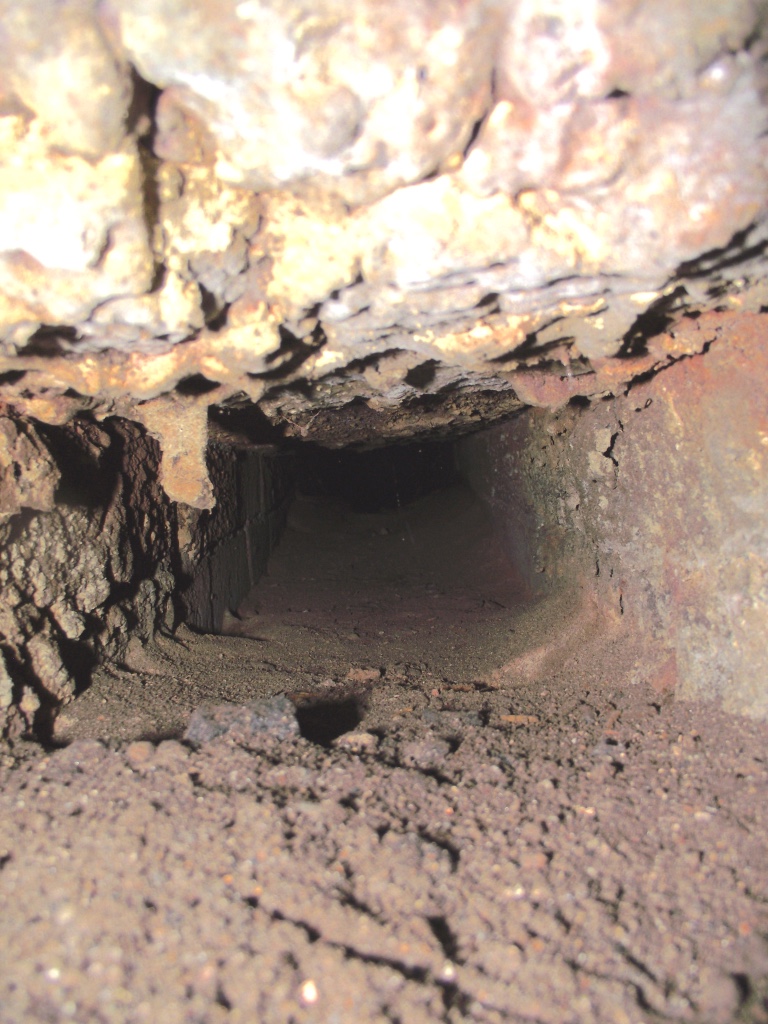 |
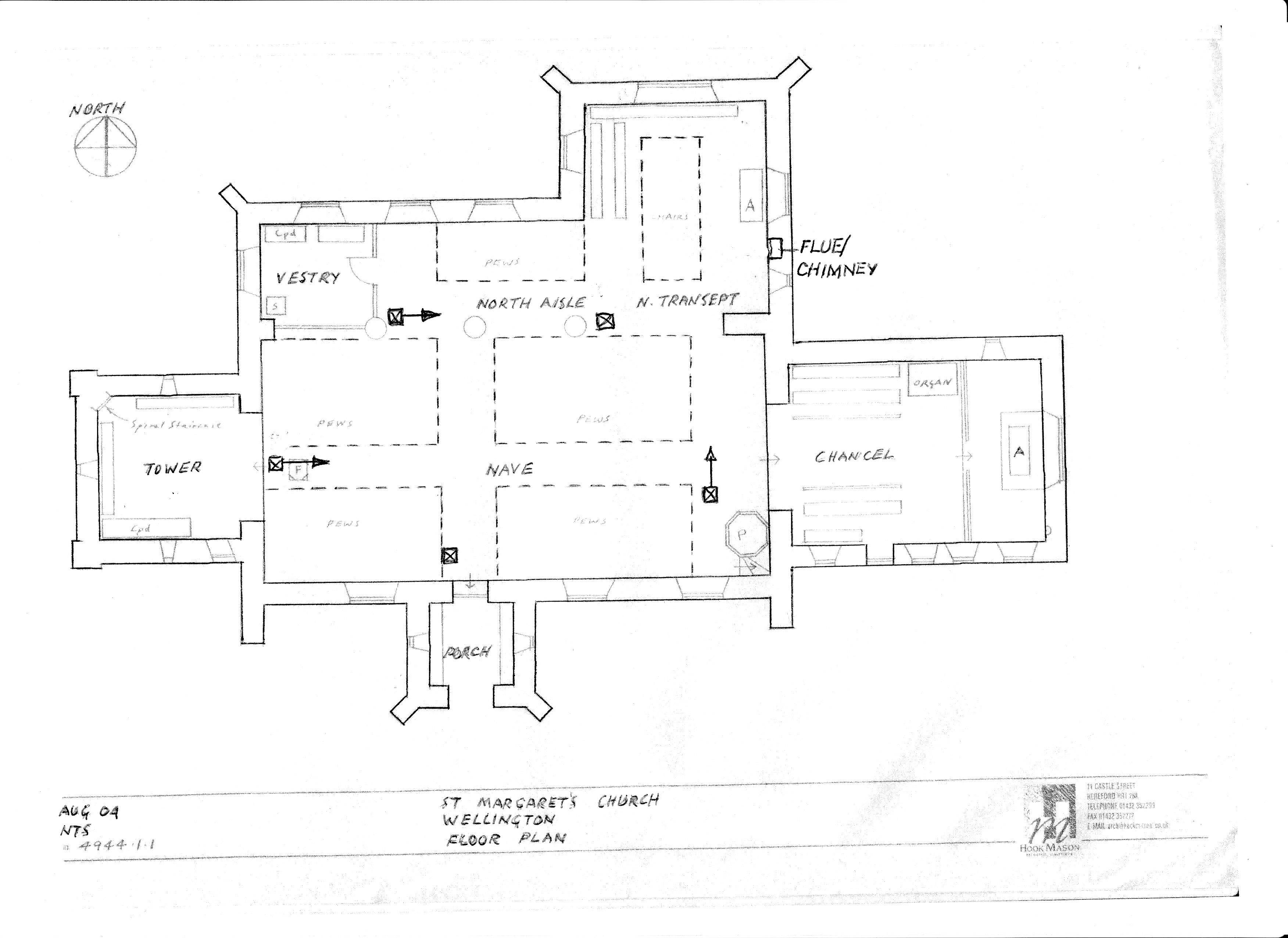
Location of the five fire pits and the route of the underfloor flue duct noted in three of the fire pits.
|
With the cast iron floor
plate removed the open fire pit would have been filled
with hot coke and allowed to become red hot. The cast
iron floor plate was then replaced with the small
centre section left open. This allowed fresh air to
enter the pit chamber to create sufficient draught and
induce the flue gases to enter the floor ducts and
travel towards the chimney.
The passage of the very hot
flue gases from each hot pit would travel through the
brickwork ducts and then transfer its heat into the
floor slabs and tiles which then transferred heat by
conduction and radiation into the occupied space of
the Church.
|
Chimney
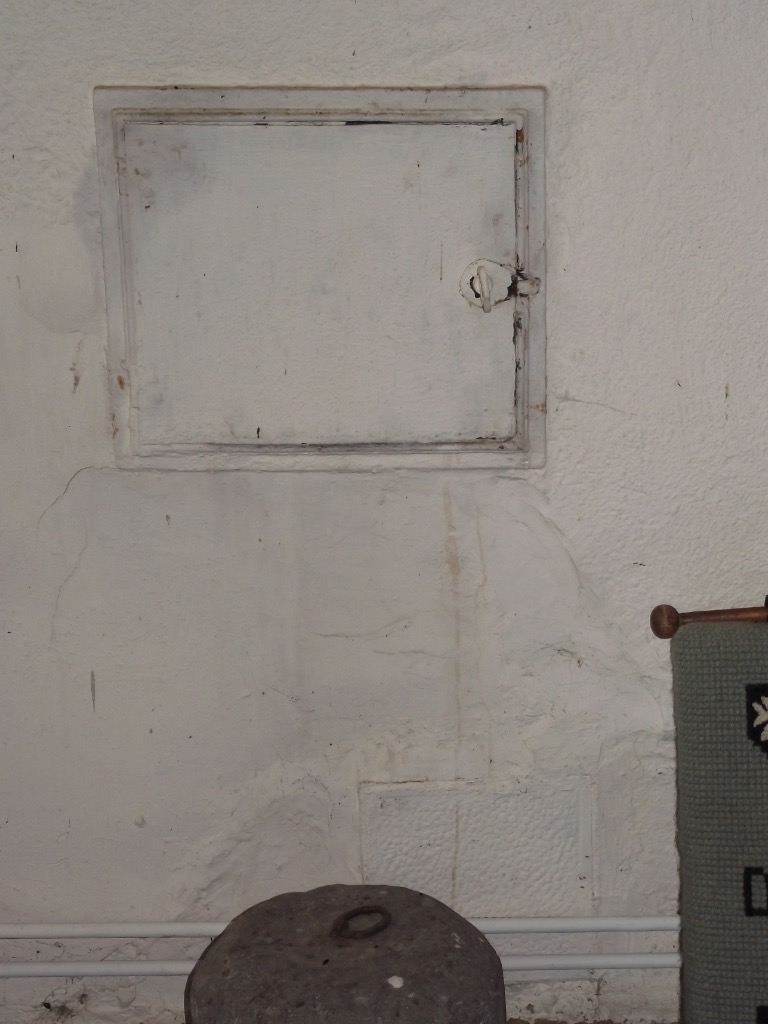 Large view of the cleaning and access door into the chimney |
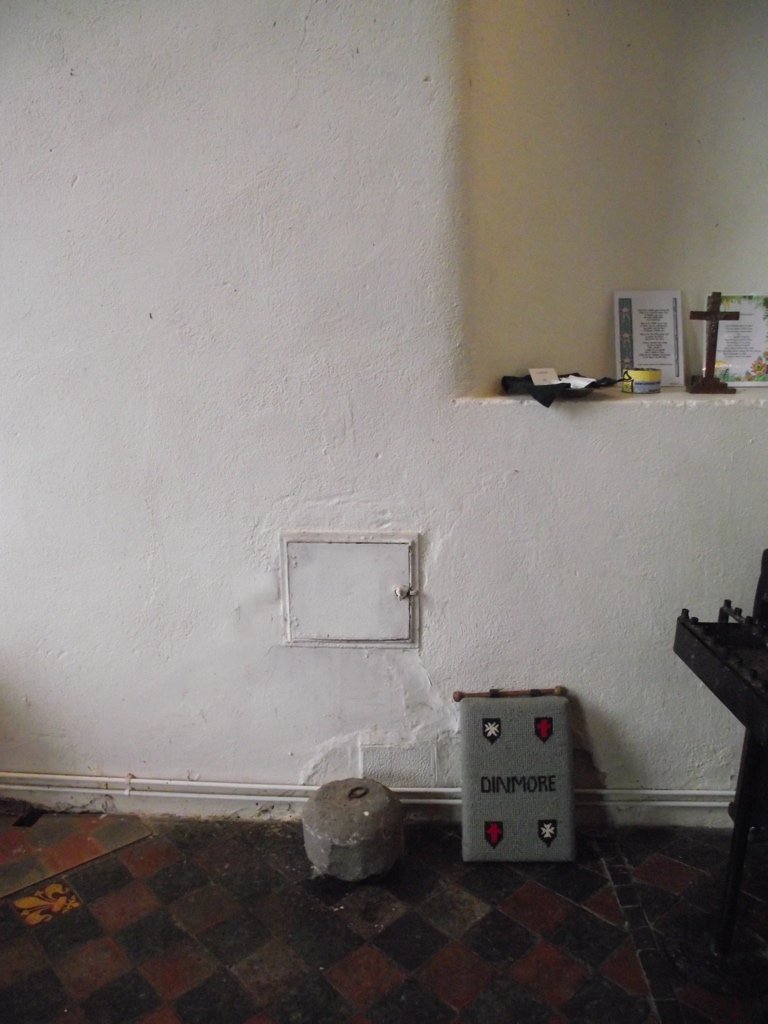 View of the cleaning door and lower smaller clean-out door |
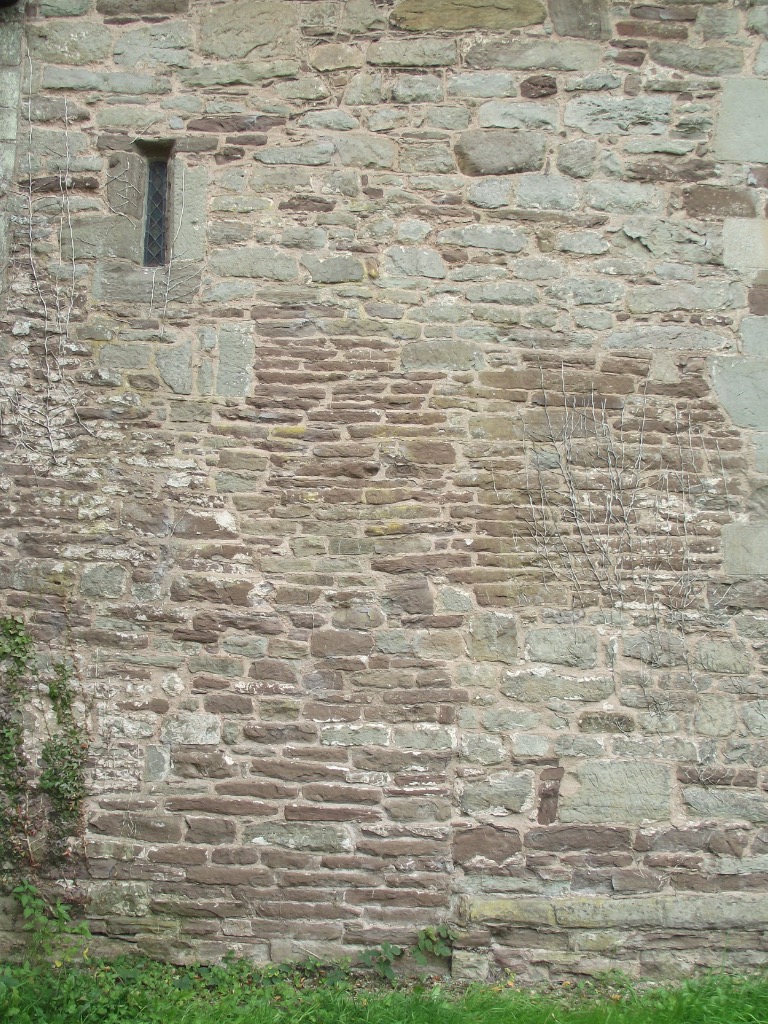 From the rearranged layout of the stonework in the external wall it is possible that the internal flueway was built into the wall from the outside during the restoration works. |
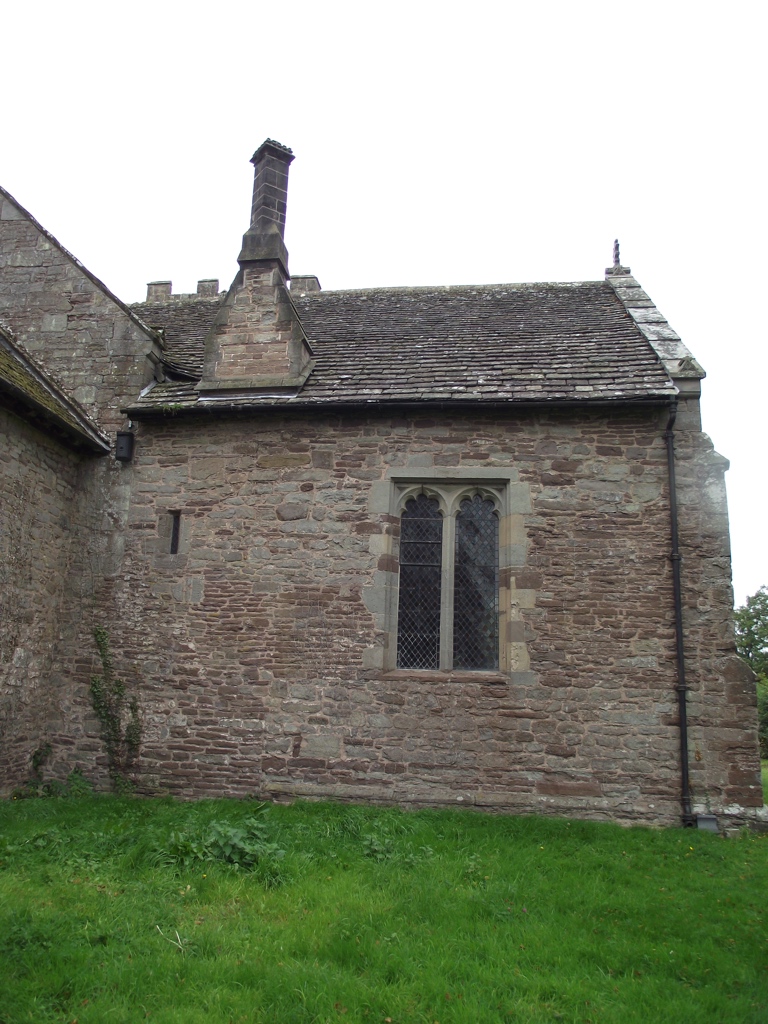 The height of the chimney is level with the ridge line of the North Transept which would possibly have been inadequate to create sufficient draught. |